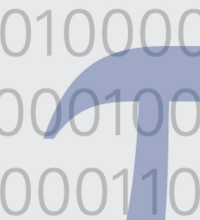Events
Spring 2017

Pseudorandomness Seminar
Tuesday, April 25th, 2017, 4:30 pm–5:30 pm
Parent Program:
Speaker:
Location:
Calvin Lab Room 116
The Decision Tree Complexity of k-SUM is Near-Linear
The 3-SUM problem asks, given n real numbers x_1,...,x_n, whether there exist 3 of them that sum to zero. There is a trivial algorithm that solves it in O(n^2) time, and the best algorithm to date only improves upon it in logarithmic terms. A significantly better algorithm is believed to be impossible (or at least very surprising).
We show that in the linear decision tree model, 3-SUM has an O(n polylog(n)) algorithm. A linear decision tree is an adaptive algorithm which makes linear queries of the form "sum a_i x_i>0 ?" to the input x, and at the end decides whether a 3-SUM exists. Moreover, the type of queries we use are only label queries of the form "x_i+x_j+x_k>0 ?" or comparison queries of the form "x_i+x_j+x_k>x_a+x_b+x_c ?". Thus, the queries are all 6-sparse linear queries with {-1,0,1} coefficients. More generally, for any constant k, we get a linear decision tree for k-SUM which makes O(n polylog(n)) queries which are each 2k-sparse with {-1,0,1} coefficients. This matches a lower bound of Ailon and Chazelle, and improved upon previous work of Gronlund and Pettie which gave an O(n^{k/2}) linear decision tree for k-SUM.
The proof is based on a connection between the linear decision trees model and active learning. Specifically, it builds upon a new combinatorial notion introduced by the authors in previous work of "inference dimension".
Joint work with Daniel Kane and Shay Moran.


